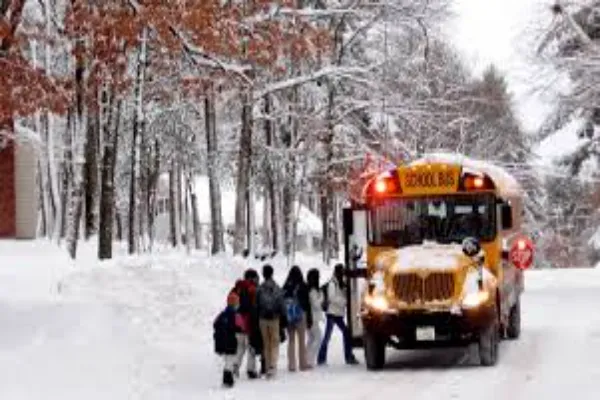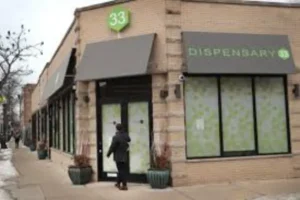How to Prepare Your School for a Safe and Efficient Winter

As temperatures drop and snow begins to fall, schools must be ready to face the unique challenges that winter brings. From freezing pipes and icy walkways to heating issues and student safety, proper preparation can make all the difference in ensuring your school operates smoothly throughout the season. Here’s a comprehensive guide on how to prepare your school for a safe and efficient winter.
1. Inspect and Maintain Heating Systems
The comfort and safety of students and staff depend heavily on reliable heating. Before winter hits full force, schedule a professional inspection of your school’s heating systems, including boilers, radiators, and furnaces. Replace filters, check for leaks, and test thermostats in every classroom to ensure they are working correctly.
In schools with older heating infrastructure, it’s vital to create a backup plan in case of a system failure. Portable heaters or designated warm zones can provide temporary relief while maintenance is performed.
2. Winterize Plumbing to Prevent Frozen Pipes
Frozen or burst pipes can cause major disruptions and expensive repairs. Protect your school by insulating exposed pipes, especially those in unheated areas such as basements, crawlspaces, or near exterior walls. Keep a steady indoor temperature and ensure faucets are not dripping or leaking.
In extremely cold regions, it may also be beneficial to leave a slow trickle of water running overnight in problem areas to prevent freezing.
3. Clear and Salt Walkways for Safety
Icy sidewalks and parking lots are a major hazard during winter months. Develop a snow and ice removal plan that includes prompt shoveling, plowing, and salting of all high-traffic areas, including entrances, playgrounds, and drop-off zones.
Invest in anti-slip mats at all building entrances to reduce the risk of slips and falls. Also, consider assigning staff or custodians to monitor weather conditions and respond quickly to new snow or ice accumulation.
4. Inspect Roofing and Gutters
Heavy snow accumulation and ice dams pose serious risks to school roofs, potentially leading to leaks, water damage, or even structural issues. To prevent problems, thoroughly inspect the roof for weak areas, damaged shingles, or spots where snow and water tend to collect. Clean gutters and downspouts regularly to maintain proper drainage and reduce the chance of ice blockages.
For schools in regions with frequent or heavy snowfall—especially those with metal or sloped roofs—installing snow guards is a smart precaution. These devices help hold snow in place, preventing sudden snow slides that can endanger students and staff below or damage property.
5. Review Emergency Preparedness Plans
Winter storms can bring unexpected school closures, delayed openings, or even power outages. Update your emergency preparedness plan and communicate it clearly to staff, students, and families.
Make sure emergency kits are stocked with flashlights, blankets, batteries, and first-aid supplies. If your school offers transportation, ensure buses are equipped with emergency gear and that drivers are trained to handle winter conditions.
6. Address Indoor Air Quality and Ventilation
Maintaining good indoor air quality is especially important in winter, when windows are closed and heating systems run continuously. Clean air ducts, replace filters, and consider adding air purifiers in classrooms or shared spaces.
Proper ventilation also helps reduce the spread of illness, which tends to rise in colder months. Encourage regular handwashing and keep sanitation supplies stocked.
7. Communicate with Parents and Staff
Timely communication is key to a smooth winter season. Use multiple channels—email, text alerts, school apps, or social media—to keep families and staff informed about weather-related updates, closures, and safety protocols.
Consider sending out a winter preparedness guide for parents that includes tips on dressing children appropriately, drop-off procedures during snow, and how to receive timely notifications.
8. Prepare Classrooms and Common Areas
Ensure that all classrooms, hallways, gyms, and cafeterias are winter-ready. Check windows and doors for drafts and seal any gaps with weather stripping or insulation. Keep space heaters out of classrooms unless they’re school-approved and used under supervision.
Encourage teachers to check their classroom temperatures daily and report any inconsistencies to maintenance staff.
9. Encourage Winter Safety Education
Educate students and staff about winter safety. A short assembly or classroom presentation on avoiding slips, dressing warmly, and recognizing signs of frostbite or hypothermia can make a big difference.
Staff should also be trained to identify weather-related hazards and know how to respond to emergencies such as accidents, heating failures, or school lockdowns due to severe weather.
Final Thoughts
Winter can be a challenging season for schools, but with thoughtful preparation, your campus can remain a safe, warm, and functional environment for learning. By maintaining systems, enhancing safety protocols, and staying proactive, you ensure that both staff and students can focus on education—not the weather.
Taking action now can prevent costly disruptions later and keep everyone on track through the coldest months of the year. Stay prepared, stay safe, and make winter one of your school’s most successful seasons yet.




